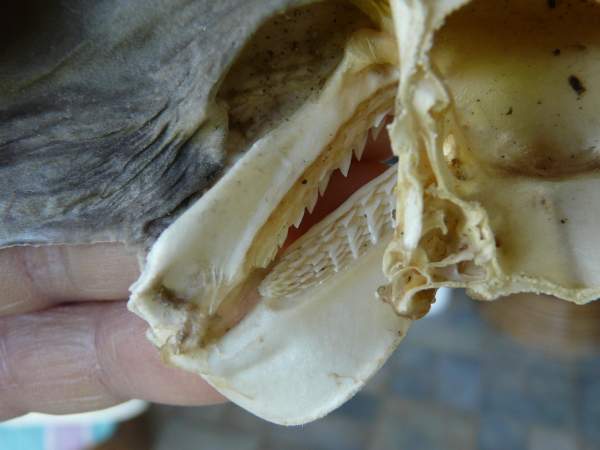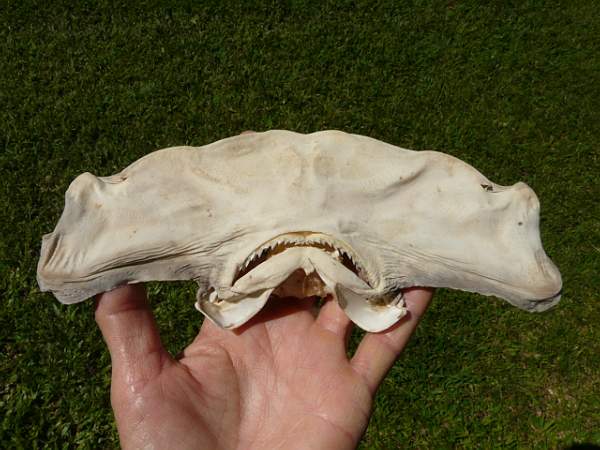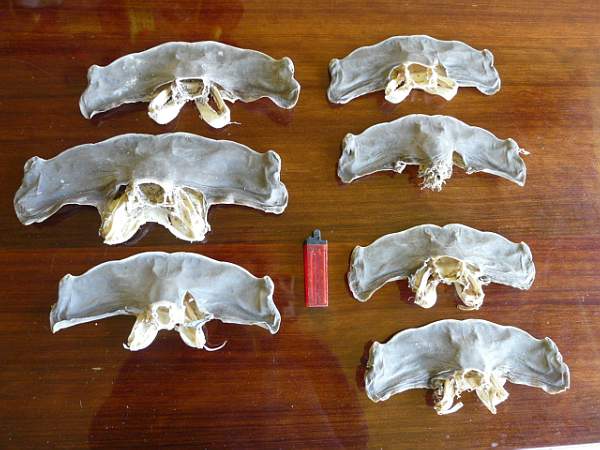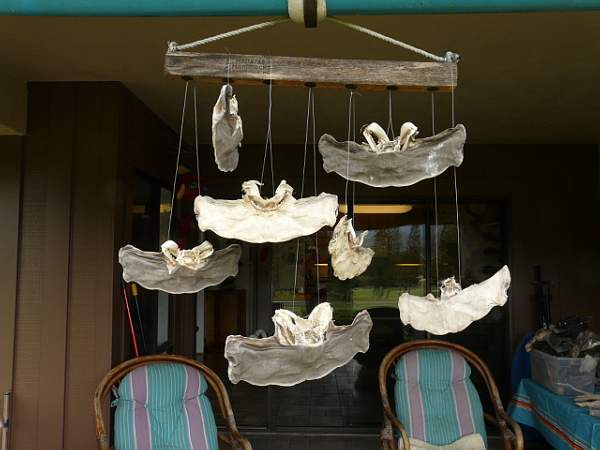Published in the Ocean Watch column, Honolulu Star-Advertiser © Susan Scott
February 20, 2009
I’m home from Baja. It’s good to be back in Hawaii, but the house smells like dead fish. I think the odor will go away, but if not, well, my treasures are worth it.
Those treasures are the hammerhead shark heads I found while exploring a beach on eastern Baja. Anglers from a nearby fishing camp cleaned their catches there and left the remains for the vultures, crabs, flies and ants.
Those recyclers did a good job. The sharks’ eye sockets were empty, and the flesh was gone. Skin, however, gray on top and white underneath, still covered the cartilaginous skulls. It seemed odd the insides of the shark heads were clean but the skin was still intact and stinky.
“Tells you something about shark skin,” Craig said. It does. Shark skin is such tough stuff, even crabs pass on it.
I gathered seven shark heads in a piece of discarded fishnet, marveling at the 2-inch-wide crescent-shaped mouths with rows of spare teeth lined up behind one another. When the working teeth wear out, the back ones move forward to do the job.

The heads came from scalloped hammerhead pups, 32 to 40 inches long. I know this because the width of a hammerhead’s head is about 25 percent of its length, and the heads were all 8 to 10 inches wide.
Scalloped hammerheads grow to 13 feet long.
Nine hammerhead species inhabit the world’s tropical and subtropical seas. Although three species have been reported in Hawaii’s waters, the scalloped is by far the most abundant here, in the Sea of Cortez and throughout the world.

Kaneohe Bay is a major pupping and mating area for scalloped hammerheads. Between April and October, adult sharks enter the bay, deliver 15 to 30 pups around 20 inches long, mate and then leave. In a good year an estimated 10,000 pups are born in Kaneohe Bay.
Even with those numbers, though, hammerheads are not sharks to fear. Only a few hammerheads attacks have been documented in the entire world. Two nonfatal hammerhead bites possibly occurred in Hawaii, but this is questionable since the species were not confirmed.
Kaneohe Bay’s hammerhead pups spend their first year at the bottom of the bay’s deeper waters eating crabs, lobsters and shrimp. But they need to stay alert. Hammerhead adults sometimes eat hammerhead pups.
For most of the year, Hawaii’s mature hammerheads eat fish and squid at sea. These sharks also cruise the ocean floor while swinging their mallet-shaped heads back and forth to find rays, octopuses, crabs and lobsters.
Sharks locate their prey with sensory organs that detect electric impulses from living creatures. As you might expect, the underside of a hammerhead’s head has more of these organs than other big-headed bottom-feeding sharks, such as the sandbar shark.
The wide spacing of the eyes and nostrils give hammerheads exceptional peripheral vision and a large smelling range. When a hammerhead finds a buried prey, the shark digs it out with the front edge of its head.
As I packed my shark heads to bring home, Craig said, “What are you going to do with them?”
“They’ll make good gifts?”
He paused. “Maybe. To the right people.”
I haven’t found any of those people yet, so I’m thinking of making a hammerhead mobile for my office. But visitors be warned: This piece of art will truly stink.

